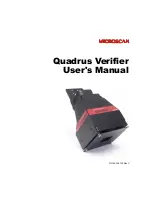
On the rear of the radio is a center pin coaxial power connector so you can plug in an external power source
to run the radio. The external power should be 13.8 VDC, with at least 600 mA. The PSR600 comes with
an AC power supply and a DC cable.
The radio does not come with a cigar cord, the included power cable has tinned ends that you can connect
to a cigar lighter plug if you want.
It all starts at the antenna…
The most important part of a scanner is the antenna. This determines how well the scanner will perform.
While in many instances the included antenna will work just fine, if you are doing any type of serious
monitoring from a building or vehicle an external antenna is required. While there are dozens of available
scanner or two-way antennas that will work fine, the antenna that works best for you depends on many
factors. This includes the frequencies you want to monitor, the distances and power levels involved, you
location and elevation and more. Entire books have been written to help you decide what works best. See
Scanner’s Master’s antenna section for a variety of excellent options.
The PSR600 comes with a standard BNC telescoping antenna. It connects onto the BNC connector on the
rear of the radio. You can also use this to connect another antenna, either directly or with coaxial cable.
You can use an antenna geared toward a specific band or one more generalized over the range of
frequencies.
…and continues with the radio…:
With like antennas the PSR600 and it’s competition, the Uniden BCD996XT, perform similarly as far as
sensitivity is concerned. If you read the Yahoo, RadioReference and other user groups and web sites online
you’ll find a spirited debate over which radio is the better receiver. It seems as though it depends on the
environment you’re in (urban, suburban, rural), how close you are to nearby unwanted transmitters
(cellular, paging, broadcast and the like), among other factors. There is no definitive answer on this. I
personally did get a bit more intermod type interference from the PSR600 when comparing them in a high
RF environment (in a city or when you’re close by the aforementioned types of transmitter sites). I have
also heard of cases where in a high RF environment, when you connect an outdoor/base station antenna, the
GRE will tend to become overloaded but you can remedy this by enabling attenuation. The problem with
this is that it lessens the impact of the time, money and effort you put into putting up an outdoor antenna in
an effort to receive distant signals. Now suddenly you’re attenuating them. All radios are subject to this
problem to some degree but the Uniden less so than the GRE.
Your results may vary, and results can vary from radio to radio.
… and ends up at the speaker.
The GRE provides about 1.8 watts of audio into a built-in speaker. This provides pretty good audio punch
for a mobile scanner and the audio sounds good across the board. The GRE really shines over the
competition when listening to digital P25 signals, the digital decoder circuits (called a vocoder) handle
digital audio well and cements GRE’s reputation as superior for digital decoding. While Uniden has
improved with the XT line, the GRE still wins out.
The PSR600 has an earphone jack that provides limited audio power so as not to blast your eardrums. If
you want to use an external speaker then you should plug it into the rear External Speaker jack. The
earphone jack works fine with iPod style earbuds or other standard earphones and devices.
Programming
If you have never programmed a scanner before you will want to take time to read the manual thoroughly.
This is a complicated radio and there are a lot of things to learn. That said, it isn’t really hard to learn if you
have patience and are willing to take the time. The same goes for the Uniden scanners. There’s a learning
curve with these radios and if you’re not up for spending some quality time with the manual and, if you’re
not an experienced radio hobbyist or professional, also prepare yourself for some quality time with web
sites and forums which explain and provide information on trunking and other types of radio systems. If
you’d rather not go through this process, a process which will help you understand and make better use of



































